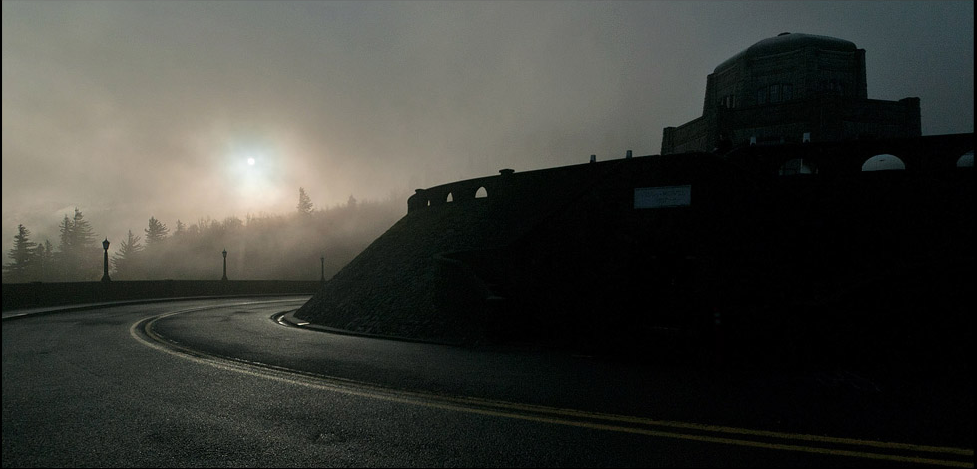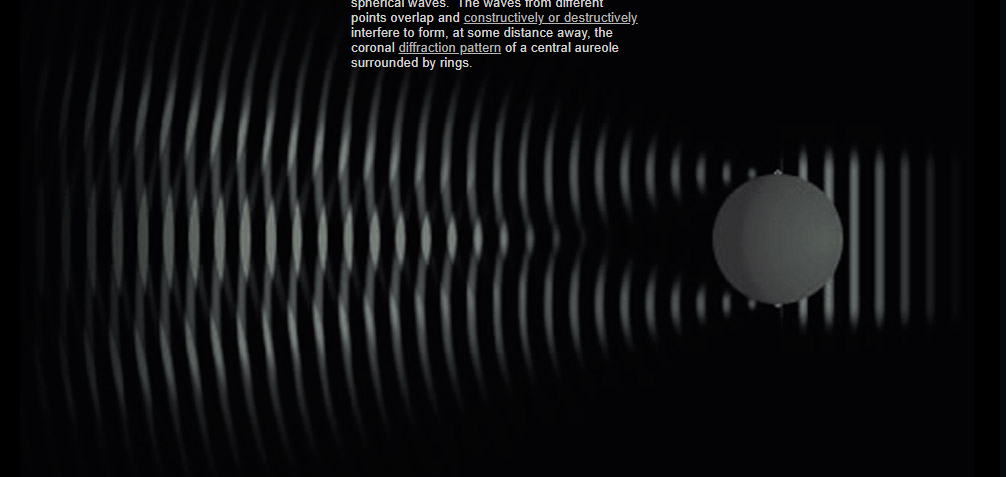OPOD - Vista Point Diffraction
OPOD - Vista Point Diffraction: Unveiling the Enigmatic Coronal Diffraction Pattern
Welcome to a captivating world of atmospheric optics! In this article, we delve into the intriguing phenomenon known as "Vista Point Diffraction" or "Coronal Diffraction." Prepare to be amazed as we unravel the secrets behind the formation of this mesmerizing optical display.
When light encounters small water droplets in the atmosphere, it undergoes a process called diffraction, giving rise to a stunning visual spectacle known as a corona. As each point on the periphery of a water droplet scatters light, it generates outward-going trains of spherical waves. These waves from various points converge, leading to constructive or destructive interference at certain distances away from the droplets. The result is the formation of a central aureole encircled by rings, which collectively constitute the coronal diffraction pattern.
The corona observed at Vista House, Oregon, on a foggy autumn morning, exemplifies the enchanting beauty of this atmospheric optical phenomenon. Victor von Salza's photograph vividly captures the ethereal nature of the subtle corona, demonstrating the intricate interplay of light and water droplets in generating this captivating display.
To fully comprehend the intricacies of Vista Point Diffraction, it is essential to understand the underlying principles governing its formation. As light passes through a water droplet, it undergoes refraction and diffraction. Refraction occurs as light bends upon entering and exiting the droplet, while diffraction refers to the scattering and interference of light waves. These phenomena collectively contribute to the intricate patterns observed in coronal diffraction.
The corona's central aureole represents the region where constructive interference occurs, resulting in brighter illumination. Surrounding this aureole are concentric rings that emerge from the destructive interference of light waves. The size and intensity of these rings depend on various factors, including the droplet size, the angle of illumination, and the wavelength of light.
Interestingly, the size of the droplets plays a crucial role in determining the appearance of the coronal diffraction pattern. Smaller droplets tend to produce more prominent and well-defined rings, while larger droplets may yield fainter and less distinct rings. This variation in ring visibility adds an element of unpredictability and intrigue to the vista point diffraction phenomenon.
Vista Point Diffraction is not limited to water droplets alone; it can also occur with other particles suspended in the atmosphere, such as ice crystals or even dust particles. Each type of particle produces its unique coronal diffraction pattern, influenced by factors such as shape, size, and refractive index. This diversity adds to the complexity and diversity of atmospheric optics, offering a rich tapestry of visual wonders for enthusiasts and researchers alike.
The study of coronal diffraction patterns holds significant value in atmospheric science and meteorology. By analyzing these intricate optical phenomena, scientists can gain insights into various atmospheric conditions, such as humidity levels, particle size distributions, and even pollution levels. This knowledge contributes to our understanding of the Earth's climate system and aids in the development of accurate weather forecasting models.
In conclusion, Vista Point Diffraction or Coronal Diffraction is a captivating atmospheric optics phenomenon that unveils the mesmerizing interplay of light and water droplets. The formation of the coronal diffraction pattern involves the scattering and interference of light waves, resulting in a central aureole surrounded by concentric rings. By studying these patterns, scientists can glean valuable information about atmospheric conditions and enhance our understanding of the world around us. So, next time you find yourself captivated by a corona at a vista point, take a moment to appreciate the intricate beauty and scientific significance behind this enigmatic optical display.

Subtle Corona ~ Pictured by Victor von Salza (photostream) at Vista House, Oregon on a foggy Autumn morning. ©Victor von Salza, shown with permission.
Light diffracted by small water droplets produces a corona. Each point on a drop periphery scatters light to form outward going trains of spherical waves. The waves from different points overlap and constructively or destructively interfere to form, at some distance away, the coronal diffraction pattern of a central aureole surrounded by rings.

Note: this article has been automatically converted from the old site and may not appear as intended. You can find the original article here.
Reference Atmospheric Optics
If you use any of the definitions, information, or data presented on Atmospheric Optics, please copy the link or reference below to properly credit us as the reference source. Thank you!
-
<a href="https://atoptics.co.uk/blog/opod-vista-point-diffraction/">OPOD - Vista Point Diffraction</a>
-
"OPOD - Vista Point Diffraction". Atmospheric Optics. Accessed on November 26, 2024. https://atoptics.co.uk/blog/opod-vista-point-diffraction/.
-
"OPOD - Vista Point Diffraction". Atmospheric Optics, https://atoptics.co.uk/blog/opod-vista-point-diffraction/. Accessed 26 November, 2024
-
OPOD - Vista Point Diffraction. Atmospheric Optics. Retrieved from https://atoptics.co.uk/blog/opod-vista-point-diffraction/.